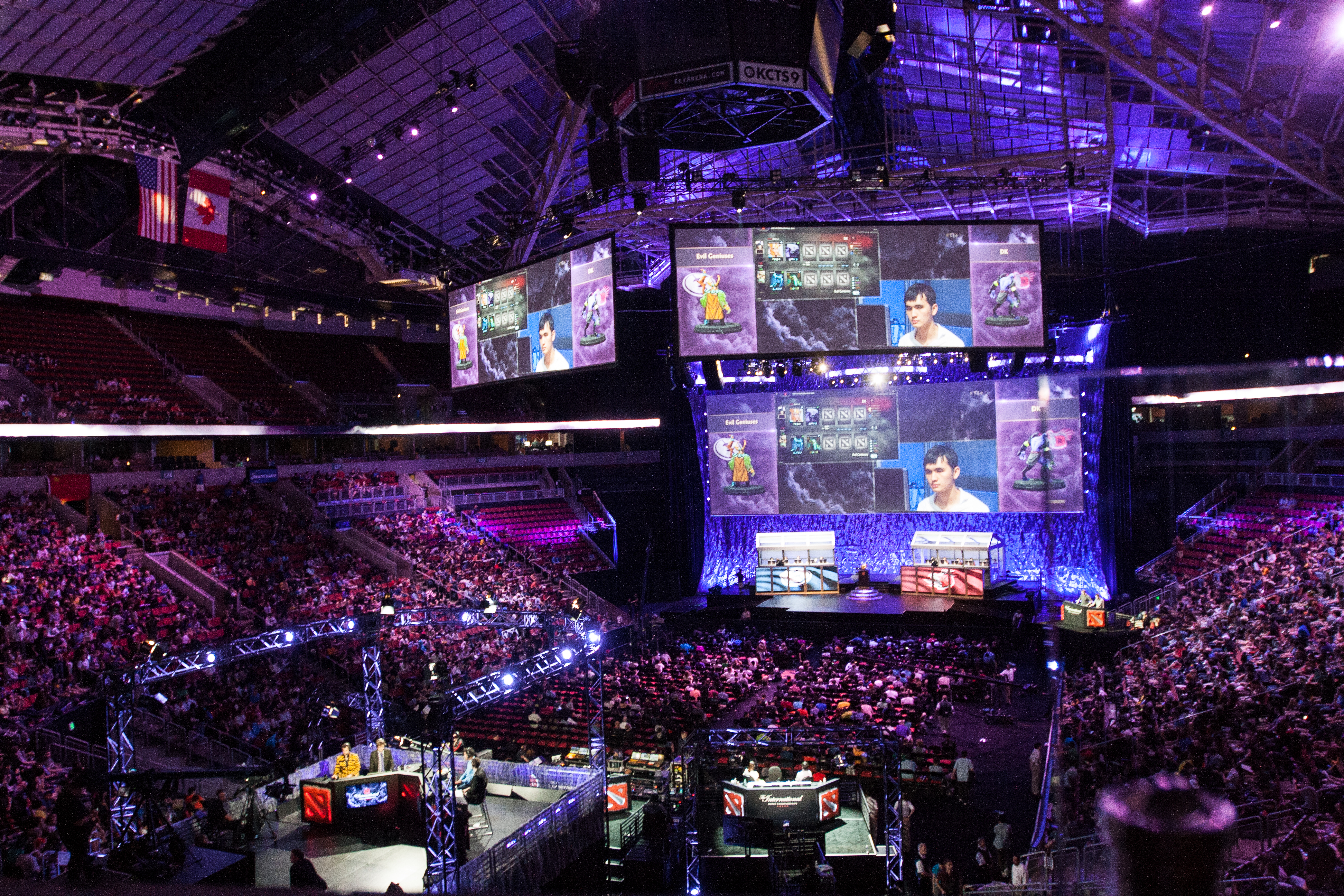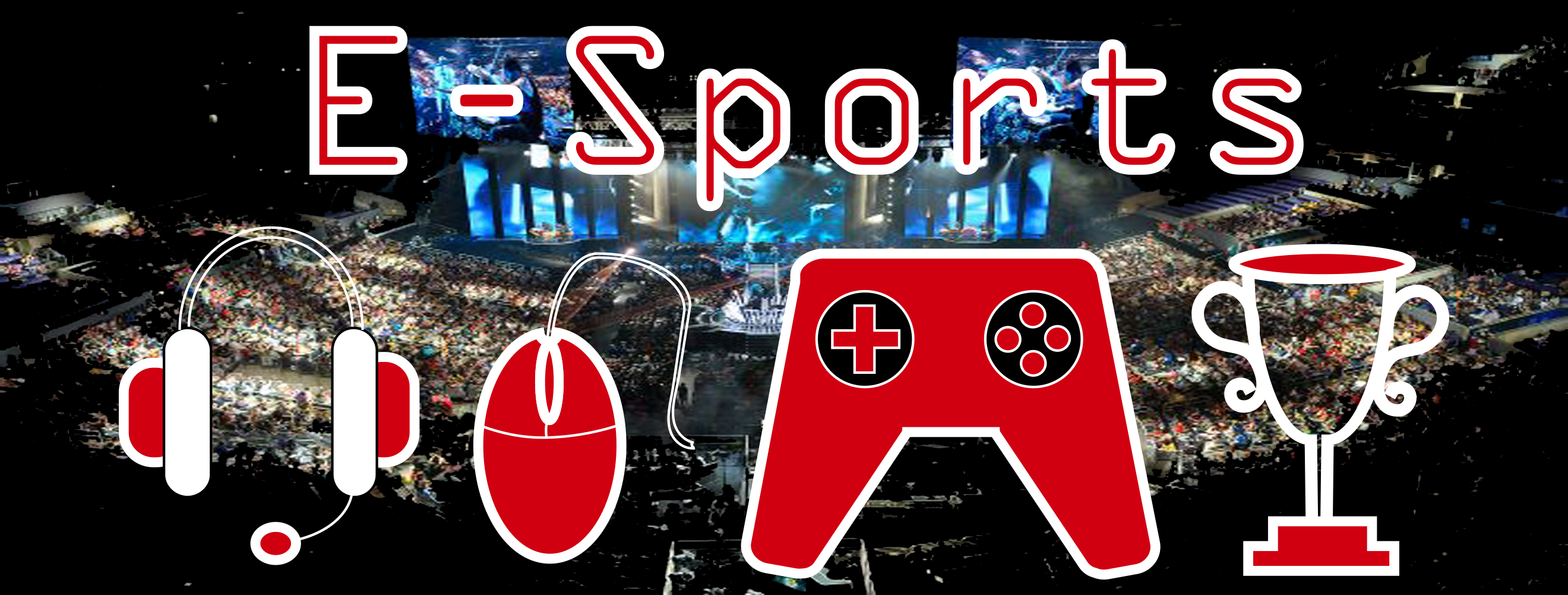E-Sports on college campuses becoming a reality
E-Sports is taking over the world. All it takes is quick reflexes and a couple of computers. The next target: college campuses. The time has arrived. E-Sports could become the first varsity sport offered at UHCL.
It is an entirely new way to view sports. There are millions of people around the world playing video games and it is a medium that allows individuals to interact and play against each other, either casually or competitively.
Games designer and author Jane McGonigal reports a half-billion people on earth play video games at least an “hour a day”, of which 183 million are American. Ninety-seven percent of American youth, ages 12-17, play video games.
Today colleges and universities are taking steps to incorporate “E-Sports” (short for Electronic Sports) into their schools and communities.
E-Sports are organized, multiplayer video game competitions where skilled gamers compete against each other, frequently with a great deal of prize money on the line. Just a few years ago, E-Sports failed to receive even a passing glance from other major sporting associations. It was deemed a “grassroots” movement; nothing significant.

Fast-forwarding to the present day, E-Sports has developed a substantial commercial draw, with a growing audience and major events throughout the world. One example is last year’s League of Legends Season 3 World Championship, which sold out in a little over an hour at the Staples Center in Los Angeles, CA.
From Major League Gaming (MLG) prize pools of $5,000-$10,000 ten years ago, to this year’s DOTA 2 – The International 4 event, which presented a $10 million-plus prize purse and had its championship match broadcast on ESPN, E-Sporting events are quickly becoming more competitive and more lucrative.
Robert Morris University (RMU), located in Aurora, IL, officially became the first university to recognize E-Sports as a varsity sport. It granted scholarships to 35 students under the school’s new E-Sports program, offering up to 50 percent off the price of tuition, room and board. As part of the Collegiate StarLeague, an intercollegiate gaming league, RMU joins nearly 150 other universities competing in the popular game of StarCraft.
Kurt Melcher, associate athletic director and E-Sports coordinator at RMU, believes E-Sports definitely has a future on college campuses.
“I think it’s the perfect environment for E-Sports,” Melcher said. “Whether League of Legends is here in 15 years or not, there is certainly going to be games. Games have a cycle of 4-6 years of popularity, and I think that cycle from freshman to senior year is just a sort of natural fit for E-Sports.”
It simply was the right decision to add E-Sports to RMU’s athletic program, Melcher recalled.
“The numbers behind E-Sports, and people playing, are just continuing to grow,” Melcher said. “I think the age demographic fits directly into college, so to me it just made perfect sense to have it as a part of our athletic program.”
Following in RMU’s footsteps was the University of Pikeville (UPIKE), located in Pikeville, KY, which IGN (formerly Imagine Games Network), a mainstream online source for the latest news on video games, reported earlier this year also decided to recognize E-Sports as a varsity sport. Twenty scholarships will be provided to individuals this upcoming fall semester to come and compete in national collegiate tournaments, all while enrolled as students at the University of Pikeville.
So what is preventing UHCL from becoming involved with this growing phenomenon?
UH-Main already has in place a student-run gaming organization that competes in tournaments. The University of Houston Cyber Sports organization, better known as UHCS, caters to gamers who play Counter-Strike and League of Legends, all the while fostering a community that can become acquainted with one another through games and events.
Nguyen Doan, vice president of UHCS, believes that the University of Houston and the University of Houston-Clear Lake can both be pioneers in the realm of collegiate E-Sports. He also believes that there are clear steps that UH and UHCL can take to recognize E-Sports and its players more.
“The first step would be to create an official UHCS team, but the main thing that UH/UHCL can do to recognize E-Sports is to let everyone know that we have a Cyber Sports group, and that we have Counter-Strike and League of Legends teams,” Doan said. “We have put a lot of effort to show that the UHCS team is competitive and respectful.”
Rick Short, dean of the UHCL School of Human Sciences and Humanities, is hopeful that our university will eventually offer an E-Sports program for students.
“E-Sports shouldn’t take the place of more traditional sports, but they can serve as an important complement that could involve a significant number of students,” Short said.
While it might seem obvious that E-Sports should fall under the umbrella of the athletic department, Kurt Melcher did not rule out the possibility of implementing E-Sports in some other way – specifically for colleges that don’t currently offer varsity sports.
“I don’t think that it has to necessarily fit in athletics,” Melcher said. “I think that’s probably the most natural fit, but for a school like [UHCL] that doesn’t have athletics, I don’t see anything wrong with it fitting into some sort of an offshoot of computer science or technology or computer related situation. I think it probably makes the most sense to have it fit in the athletic program, but I don’t think that’s necessarily a requirement.”
Short also stressed the dissimilarity between traditional sports and E-Sports.
“Although both emphasize competition and striving for excellence, E-Sports is accessible to almost everyone,” Short said. “About 90 percent of young Americans participate in electronic gaming, often competing against other individuals and teams.”
Nguyen Doan thinks the future of E-Sports is bright. It is experiencing a continued rapid growth and Doan doesn’t see it slowing down anytime soon.
“I think it’s going to continue to grow, and grow into one the most popular types of sports in the world,” said Doan, concerning the future of E-Sports. “You have events like DreamHack that used to be just a group of friends hooking up their computers in their basement turning into now what are major quarter million dollar tournaments. I think besides the players, many people don’t see the growth of E-Sports coming, and it is really going to blindside them.”
From an administrative standpoint, Short was also optimistic about the future of E-Sports, and programs being offered at universities in the future.
“Because university students have built intercollegiate E-Sports without official university administration support, intercollegiate E-Sports are in their infancy,” Short said. “Nonetheless, a couple of private universities have pioneered offering scholarships for its E-Sports teams. I expect this to be a significant trend at colleges and universities in the next decade.”
Correction: Feb. 17, 2015
The previous address listed for Robert Morris University was incorrect; it has since been revised to show the proper address.


I knew online gaming was popular but NOT that popular! Amazing!
Great read Zach!